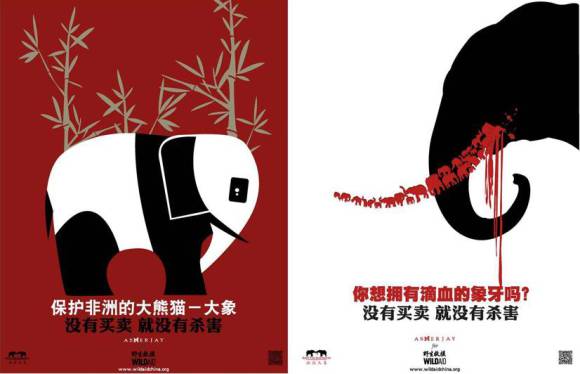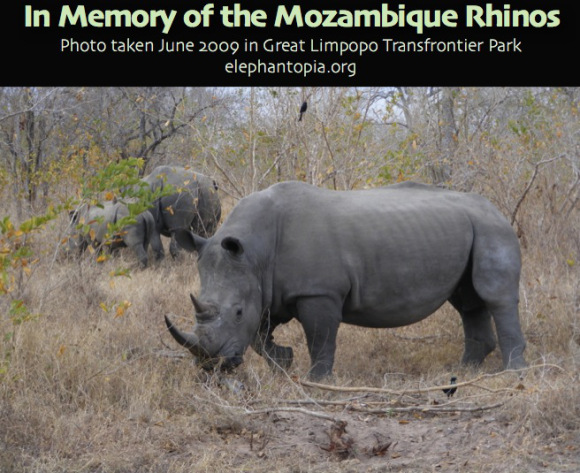The Western Black Rhino (pictured below from CNN) was last seen in 2006. This subspecies of the black rhino is native to Africa and has been declared by IUCN (International Union for Conservation of Nature - the world’s largest conservation network) to be extinct.
The black rhino species is now listed as “critically endangered” and the northern white rhino is “teetering on the brink of extinction” (IUCN reports to CNN). In 1960 there were roughly 70,000 black rhinos. Today an estimated 4,000 remain.
“In the case of the Western black rhino and the Northern white rhino, the situation could have had very different results if the suggested conservation measures had been implremented,” said Simon Stuart of the IUCN.
While we mourn for the Western Black Rhino, this tragic loss of an iconic subspecies is just a foreshadow of what is to come if nothing is done to stop the demand for illegal ivory and rhino horn. Every day, 96 elephants are slaughtered for their ivory tusks (please click to learn more & sign the Wildlife Conservation Society’s petition to have the United States declare a moratorium on ivory sales in the U.S.) At this rate, estimates are between 10-50 years until elephants are extinct in the wild.
The greatest demand for ivory and other illegal wildlife parts is led by China. Just this last week, the largest ivory seizure in Chinese history took place in Xiamen. Customs officials “smashed” a transcontinental smuggling ring responsible for illegally importing 12 tons of ivory worth 603 million yuan (HK $767 million). Two gangs were responsible for the smuggling in of well over 3,000 ivory tusks this year (that’s about 1500 elephants). Earlier this week in Tanzania, three Chinese nationals were arrested with 797 elephant tusks. Until the demand is suppressed, the Western Black Rhino is a sad example of the future for many of Africa’s iconic species.
So how to stop demand? The combination of stricter laws against ivory trade and raising public awareness through education. With most of China’s citizens having a misunderstanding of where ivory actually comes from (because the Chinese word for elephant literally means “teeth” most people do not realize you must kill the elephant to harvest it’s “teeth”), WildAid and other organizations are working hard to change public perception and understanding of the ivory trade. Artist Jay Asher explains his passion for using art to educate,
By transforming consumers into conservationists, we can directly impact the future of Africa’s rhinos and elephants. Through these educational public media ads (see below), the hope is for consumers to become advocates for elephants and rhinos rather than consumers of ivory and rhino horn (Learn more about the campaign HERE.)
But does education and advocacy really do anything? Will it change the future for the elephant? Or the rhino?
Nelson Mandela once said,
Education is the most powerful weapon which you can use to change the world
That is why we do what we do on this blog and through Facebook/Twitter. To raise awareness. To provide ways for people to get involved and help create a better future for elephants and humans to exist TOGETHER for much more than the next 50 years. Conservation and education efforts DO work. The IUCN testifies that the southern white rhino subspecies, which at the end of the 19th century had less than 100 left in the wild, now has an estimated population of 20,000.
And while the U.S. has not placed a moratorium on ivory (YET), we are proud to see that they will be crushing their ivory stockpiles in Denver this November 14. We leave you with this inspiring video from the U.S.Fish & Wildlife Service (click to read details about the upcoming crush):




